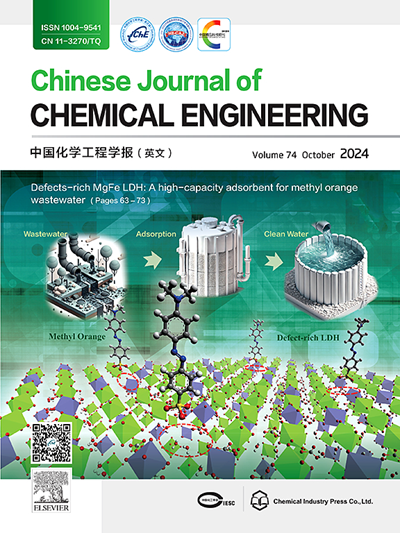Research progress on the monolithic catalyst for hydrogenation of CO2 to methane
IF 3.7
3区 工程技术
Q2 ENGINEERING, CHEMICAL
引用次数: 0
Abstract
Carbon dioxide (CO2) can be efficiently converted and utilized through the CO2 methanation reaction, which has significant potential benefits for the environment and the economy. The contradiction between the thermodynamics and kinetics of the CO2 methanation reaction process leads to low CO2 conversion at 200−350 °C and low methane selectivity at 350−500 °C. The utilization of catalysts can solve the contradiction between kinetics and thermodynamics, achieving high CO2 methanation efficiency at low temperatures. However, the poor thermal conductivity of powder catalysts leads to the rapid accumulation of heat, resulting in the formation of hot spots, which can cause the sintering or even deactivation of active species. To solve this problem, researchers have focused on monolithic catalysts with integrated reaction systems. This review categorizes the monolithic catalysts into two main groups based on their unique characteristics, namely structured catalysts and catalytic membrane reactors. The characteristics of these monolithic catalysts, commonly used support materials, preparation techniques, and their applications in the CO2 methanation reaction are discussed in depth. These studies provide theoretical basis and practical guidance for the design and optimization of structured catalysts and catalytic membrane reactors. Finally, challenges and prospects in the application of monolithic catalysts for the CO2 methanation reaction are proposed for the future development.

求助全文
约1分钟内获得全文
求助全文
来源期刊

Chinese Journal of Chemical Engineering
工程技术-工程:化工
CiteScore
6.60
自引率
5.30%
发文量
4309
审稿时长
31 days
期刊介绍:
The Chinese Journal of Chemical Engineering (Monthly, started in 1982) is the official journal of the Chemical Industry and Engineering Society of China and published by the Chemical Industry Press Co. Ltd. The aim of the journal is to develop the international exchange of scientific and technical information in the field of chemical engineering. It publishes original research papers that cover the major advancements and achievements in chemical engineering in China as well as some articles from overseas contributors.
The topics of journal include chemical engineering, chemical technology, biochemical engineering, energy and environmental engineering and other relevant fields. Papers are published on the basis of their relevance to theoretical research, practical application or potential uses in the industry as Research Papers, Communications, Reviews and Perspectives. Prominent domestic and overseas chemical experts and scholars have been invited to form an International Advisory Board and the Editorial Committee. It enjoys recognition among Chinese academia and industry as a reliable source of information of what is going on in chemical engineering research, both domestic and abroad.
 求助内容:
求助内容: 应助结果提醒方式:
应助结果提醒方式:


